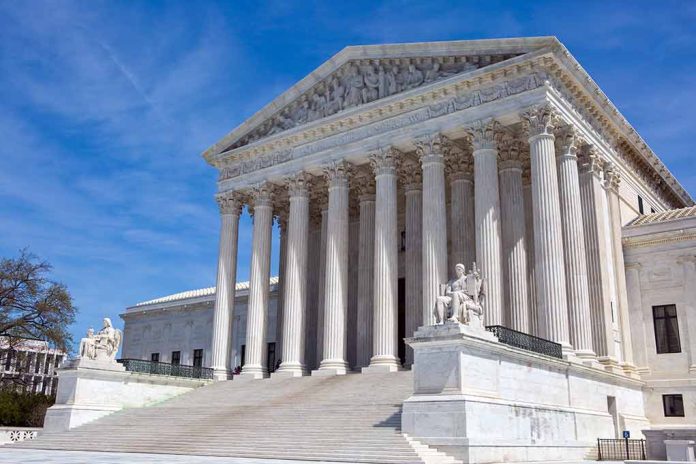
The U.S. Supreme Court remains a crucial pillar of America’s legal framework, with recent court-packing debates highlighting the tensions surrounding its role and integrity.
At a Glance
- Many conservatives supported Donald Trump in 2016 due to Supreme Court concerns.
- 2020 election pivotal for Court’s future; proposals to expand blocked by Republican Senate.
- Kamala Harris has suggested Supreme Court reforms, such as adding more justices.
- Republican Senate majority hinders Democrat plans to pack the Court.
The Supreme Court’s Role and Court-Packing Concerns
The U.S. Supreme Court plays an essential role in America’s constitutional framework. Its composition often becomes a focal point during political debates. Concern over the potential for bias is particularly evident in discussions surrounding “court-packing,” which involves adding more justices to tilt the ideological balance. This practice has been met with significant resistance from conservatives who argue that it threatens judicial impartiality and undermines the very fabric of the judiciary.
The 2020 election underscored such concerns, with many conservatives backing Donald Trump amid apprehensions about the Supreme Court’s future composition. The Republican Senate majority that emerged effectively put a halt to the Democrats’ court-packing ambitions. This outcome ensures the Court’s existing conservative majority, impacting crucial issues like abortion and gun control.
Debates Over Judicial Reforms
The push for Supreme Court reform is not new. Kamala Harris, among other Democrats, has floated ideas for restructuring the Court, though details remain sparse. Proposals have ranged from adding justices to imposing term limits and ethical standards. Advocates argue these changes are necessary to address perceived imbalances and ensure accountability. However, resistance, primarily from Republicans, highlights the division such reforms provoke.
“I do believe there should be some kind of reform of the court, and we can study what that actually looks like,” Harris states, rather vaguely.
The Republican majority in the Senate serves as a bulwark against major reforms or expansions of the Supreme Court. Analysts suggest this majority implies the Court will remain unchanged for at least a decade, maintaining its current conservative leaning. This outcome is seen by some as a definitive pause to one of the most significant threats to the Court’s composition and legacy.
Implications for National Policy
The Court’s ideological balance has far-reaching implications for American law and policy. States now have more autonomy in setting abortion limits, bolstering gun and religious rights while monitoring the administrative state’s powers. Moves towards wealth taxation and similar measures may face increased skepticism. The Court’s decisions on these matters will resonate deeply, influencing generations of Americans and shaping the political landscape.
“A younger generation will grow up in a country where the voters of each state are allowed to determine what limits to place on abortions. Likewise, gun rights and religious rights will continue to be robustly protected,” says constitutional expert Jonathan Turley.
The ongoing debate surrounding the Supreme Court and the efforts to maintain its integrity underscore the enduring challenges of balancing justice, democracy, and political influence. While the recent election results provide temporary stability, the broader discussion about the Court’s future role in American society is far from over.





